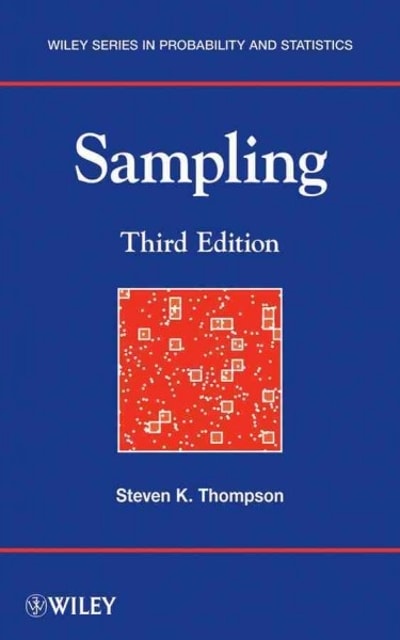Question
2.38. A coin is tossed three times. If X is a random variable giving the number of heads that arise, construct a table showing the





2.38. A coin is tossed three times. If X is a random variable giving the number of heads that arise, construct a table showing the probability distribution of X.
2.39. An urn holds 5 white and 3 black marbles. If 2 marbles are to be drawn at random without replacement and X denotes the number of white marbles, find the probability distribution for X.
2.40. Work Problem 2.39 if the marbles are to be drawn with replacement.
2.41. Let Z be a random variable giving the number of heads minus the number of tails in 2 tosses of a fair coin. Find the probability distribution of Z. Compare with the results of Examples 2.1 and 2.2.
2.42. Let X be a random variable giving the number of aces in a random draw of 4 cards from an ordinary deck of 52 cards. Construct a table showing the probability distribution of X.
2.44. Obtain the distribution function for (a) Problem 2.38, (b) Problem 2.39, (c) Problem 2.40. 2.45. Obtain the distribution function for (a) Problem 2.41, (b) Problem 2.42. 2.46. Table 2-8 shows the distribution function of a random variable X. Determine (a) the probability function, (b) P(1 X 3), (c) P(X 2), (d)
2.48. Find the distribution function for the random variable of Problem 2.47. Graph the density and distribution functions, describing the relationship between them. 2.49. A random variable X has density function
2.54. The joint probability function of two discrete random variables X and Y is given by f(x, y) cxy for x 1, 2, 3 and y 1, 2, 3, and equals zero otherwise. Find (a) the constant c, (b) P(X 2, Y 3), (c) P(l X 2, Y 2), (d) P(X 2), .
2.55. Find the marginal probability functions of (a) X and (b) Y for the random variables of Problem 2.54. (c) Determine whether X and Y are independent. 2.56. Let X and Y be continuous random variables having joint density function Determine (a) the constant c, (b) (c) (d) (e) whether X and Y are independent. 2.57. Find the marginal distribution functions (a) of X and (b) of Y for the density function of Problem 2.56.
2.58. Find the conditional probability function (a) of X given Y, (b) of Y given X, for the distribution of Problem 2.54. 2.59. Let Find the conditional density function of (a) X given Y, (b) Y given X. 2.60. Find the conditional density of (a) X given Y, (b) Y given X, for the distribution of Problem 2.56. 2.61. Let be the joint density function of X and Y. Find the conditional density function of (a) X given Y, (b) Y given X.
2.62. Let X have density function Find the density function of Y X2. 2.63. (a) If the density function of X is f(x) find the density function of X3. (b) Illustrate the result in part (a) by choosing and check the answer. 2.64. If X has density function find the density function of Y X2. 2.65. Verify that the integral of g1(u) in Method 1 of Problem 2.21 is equal to 1. 2.66. If the density of X is f(x) 1 (x2 1), , find the density of Y tan1 X. 2.67. Complete the work needed to find g1(u) in Method 2 of Problem 2.21 and check your answer.
2.69. Check by direct integration the joint density function found in Problem 2.22. 2.70. Let X and Y have joint density function If U X Y, V X Y, find the joint density function of U and V. 2.71. Use Problem 2.22 to find the density function of (a) U XY2, (b) V X2Y. 2.72. Let X and Y be random variables having joint density function f(x, y) (2 )1 , , . If R and are new random variables such that X R cos , Y R sin , show that the density function of R
2.74. Let X and Y be identically distributed independent random variables with density function Find the density function of X Y and check your answer.
2.75. Let X and Y be identically distributed independent random variables with density function Find the density function of X Y and check your answer.
2.76. Work Problem 2.21 by first making the transformation 2Y Z and then using convolutions to find the density function of U X Z. 2.77. If the independent random variables X1 and X2 are identically distributed with density function find the density function of X1 X2
2.78. Two points are to be chosen at random on a line segment whose length is a 0. Find the probability that the three line segments thus formed will be the sides of a triangle. 2.79. It is known that a bus will arrive at random at a certain location sometime between 3:00 P.M. and 3:30 P.M. A man decides that he will go at random to this location between these two times and will wait at most 5 minutes for the bus. If he misses it, he will take the subway. What is the probability that he will take the subway? 2.80. Two line segments, AB and CD, have lengths 8 and 6 units, respectively. Two points P and Q are to be chosen at random on AB and CD, respectively. Show that the probability that the area of a triangle will have height AP and that the base CQ will be greater than 12 square units is equal to (1 ln 2) 2.





Step by Step Solution
There are 3 Steps involved in it
Step: 1

Get Instant Access to Expert-Tailored Solutions
See step-by-step solutions with expert insights and AI powered tools for academic success
Step: 2

Step: 3

Ace Your Homework with AI
Get the answers you need in no time with our AI-driven, step-by-step assistance
Get Started


